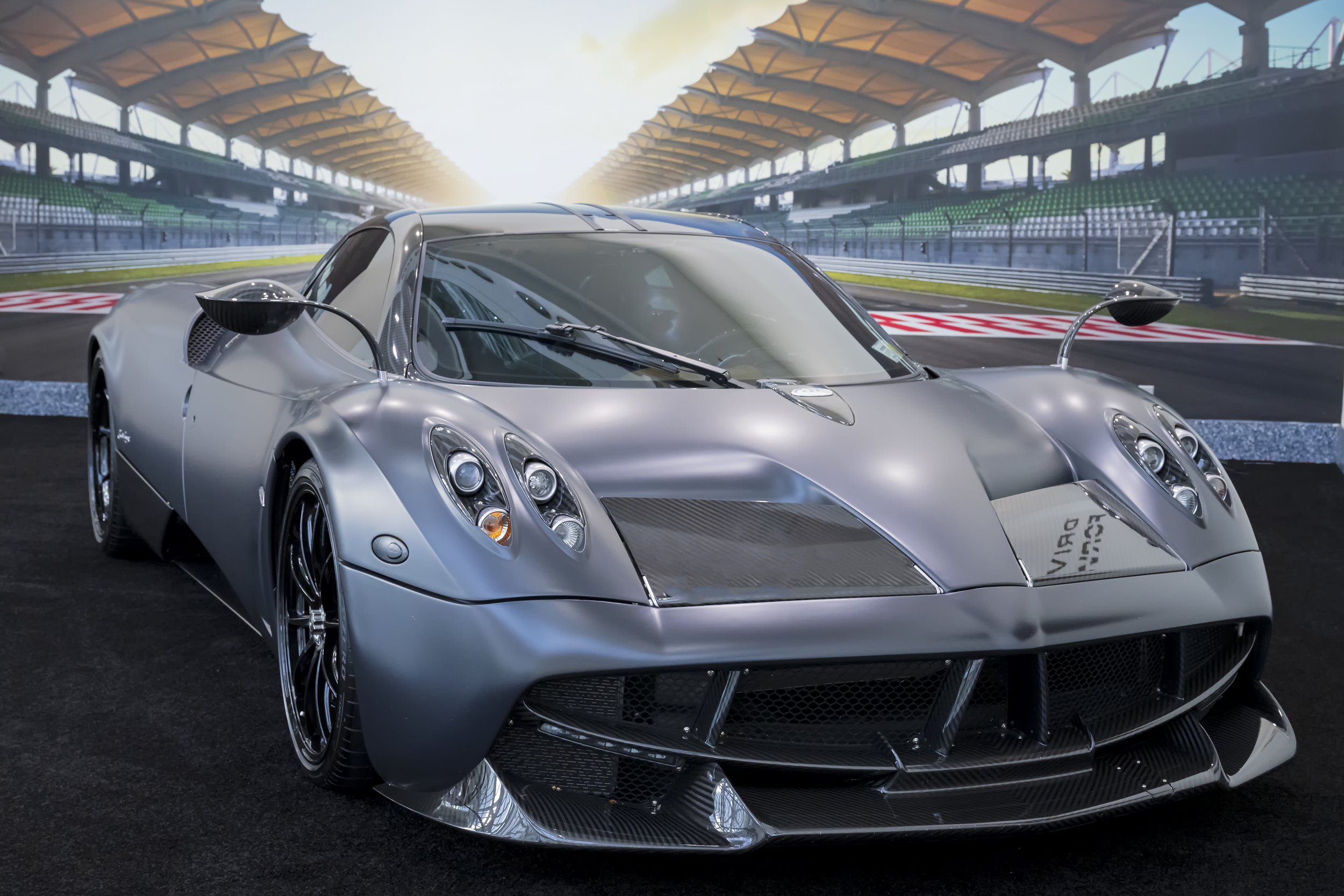Rolling into the Future Car Makers Unveil What’s New in 2024 By Photographer & Contributor Steve Tabor
The Los Angeles Convention Center opened its doors to the 2023 edition of the LA Auto Show showcasing many of the newest models coming to the showroom floors. This year’s edition featured eye catching updated versions of family cars, sport utility vehicles (SUV), and trucks and also provided a glimpse into the future of the auto industry.
During their tour of the Convention Center’s floor, Brian Maas, President of the California New Car Dealers Association (CNCDA), and Anthony Bento, Chief Legal Officer of the CNCDA, took time to outline the current state of the automobile industry and the issues it is facing and how these issues impact car buyers.
Maas and Bento agree that current interest rates and escalating car prices have slowed new cars resulting in buyers less likely to purchase a new car. As the market has recovered from COVID, dealers are finding that new cars are not leaving their dealerships as quickly as they did in the past, and the new car dealers are having difficulty in reducing their inventories of new cars. The downturn in the new car market has led to increasing demands on the used car market and increasing the likelihood of car owners holding on to their current vehicles for a longer period than ever before. Previously, on average, car owners held onto their vehicles eight years. In this new environment, owners are holding onto their vehicles an average of 12 years.
1958 F.M.R. TG 500 “Tiger”
As far as what continues to be the most popular cars, Maas indicates that SUVs and vehicles that offer a high viewing platform for drivers are the most popular among new car buyers. This is true across the board for compact, intermediate and full-size models.
Maas and Bento agree that the auto industry is grappling with two issues that it has not faced in previous years. With the average cost of a new car reaching nearly $50,000, making affordability an issue among many car buyers. Maas is concerned that these rising prices are making it increasingly difficult for low-income and moderate-income households to purchase new cars. This impacts the manufacturing levels of new cars and inventories at new car dealerships.
Road testing the new Ford Bronco on an indoor test track.
Maas is uncertain of what the solutions for the affordability issue will be, but he feels that manufacturers realize the implications for manufacturers and car buyers when it comes to the limiting the purchasing power of any segment of the car buying population.
Maas and Bento agree that leasing has had some positive impacts on the new car industry. But, they are quick to point out that leasing is not for everyone. Both point out that the short-term lease program is ideal for a person who wants to stay current on the latest trends and technology in the auto industry. Also, some find that purchasing the car at market value at the conclusion of the lease can make it a bit more affordable for some buyers.
Lexus RX Hybrid
The other trend in the auto industry is the conversion to electric vehicles. As far as the developing the infrastructure to support the vehicles, Maas believes the accessibility to recharging stations will take an effort from a number of sources. Maas likens the current state of developing recharging stations to the early days of constructing gas stations for gasoline vehicles. The development took time, but as time passed, more and more gas stations dotted the landscape and eventually were commonly found across the country.
But, even with construction of public charging stations, the cost of recharging at a public charging station can be rather costly and is by far more expensive than home charging units which brings us to another issue involving electric vehicles.
In most cases, current electric car owners have garages or car ports at their residence fitted with recharging units. But, if we expect any new vehicle sold in California in 2035 or later to be an electric vehicle, how do car owners living in multi-family housing units without access to a garage or car port charge their vehicles?
Kia Motor’s electric vehicle platform serves as the base for each Kia’s electric vehicle.
Bento states that public charging stations cost a substantial amount more than home installed units. Couple this with the fact that most individuals live in multiple family housing or lease their residences and are probably doing so because they cannot afford to own their home, so the cost of recharging a vehicle at a public location would place additional economic stressors on their already tight budgets. Installing charging units in common areas of these complexes is only part of the solution. how do we make it economical for car owners in multiple family housing complexes to economically recharge their vehicle is the bigger issue.
Gensis GV60 electric compact SUV.
Bento points out that for those individuals able to buy or lease an electric vehicle, there are a number of federal and state and in some cases local incentives. Federal incentives focus on electric vehicles manufactured in the United States. Bento states that when it comes to leasing an electric vehicle federal, state and local incentives may be more beneficial and generally apply to vehicles produced by domestic and foreign manufacturers. Bento stresses that individuals considering purchasing or leasing an electric vehicle should carefully research these incentive programs to see how these programs can be used to the buyer’s or lessee’s greatest benefit.
Electric vehicles were definitely on the minds of manufacturers for 2024. Volkswagen’s ID.4 SUV was the German manufacturer’s foray into the electric SUV market. After developing the ID.4’s battery platform, affectionately referred to as the “skateboard”, Volkswagen explored how that platform could be incorporated into other body styles. As result, they have released a European version of their iconic “microbus” van, ID.Buzz (Buzz), and they are preparing to release a U.S. version of the Buzz in the fourth quarter of 2024.
With the ID.4’s body raised above the battery platform reveals the battery and motor placements.
The Buzz is not the gypsy love van of the 1960’s or even the Vanagon. Although its exterior and interior designs pay homage to its linage, make no mistake, the Buzz is a modern all electric, all-wheel drive machine.
Inside the vehicle, the Buzz carries six to seven passengers depending on the seating package. The U.S. version is ten inches longer than the European version and approximately the same size at the VW Atlas Cross Sport. Due to its electric propulsion system, the center console, floor mounted gearshift, and transmission hump between the seats is gone leaving more leg room for passengers. The middle and back of seats fold down for extended cargo capacity.
The European version of the ID.Buzz is ten inches shorter than the U.S. version and will have a slightly different interior configuration.
The Buzz has a range of approximately 300 miles per charge. Using a Direct Current (DC) public fast charger Volkswagen estimates that it will take 30 to 36 minutes for a 10% charge to reach an 80% charge. The initial release of the Buzz will not be available with a sunroof or in a camper version. If you are interested in purchasing a Buzz, Volkswagen dealers are currently developing an interest list of potential buyers.
The U.S. version of the ID.Buzz will be available in late 2024.
General Motors Corporation (GMC), Chevrolet, Buick, and Cadillac also displayed their new line of all electric vehicles. Chevrolet is producing three versions of their Blazer: LT, RS, and SS. Chevrolet offers these vehicles in all-wheel drive, front wheel drive and rear wheel drive versions incorporating their Ultium battery platform. The SS version, available in Spring 2024, is capable of 0-60 mph in under four seconds. The RS rear wheel drive version has a range of approximately 320 miles.
The 2024 all-electric Chevrolet Blazer SUV.
Utilizing the Ultium platform other GMC all electric vehicles include Cadillac’s SUV, Lyriq, featuring a rear wheel version offering a 314-mile range and an all-wheel drive model with a 307 mile range. GMC is offering all-electric versions of the Hummer and the Sierra Denali. Chevrolet is offering all-electric versions of its Bolt, their compact Equinox SUV Equinox, and Silverado truck.
Ford continues to offer an all-electric version of the Mustang, Mustang Mach E, the F-150 Lighting, and the E-Transit van. The base-model Mustang Mach-E starts at $42,995 and is a rear-wheel drive model with a 250 mile range. Starting at $56,995, the Mustang Mach E California Route 1 all-wheel drive edition has a range of 312 miles per charge and goes 0-60 mph in 4.8 seconds.
Among the luxury all-electric vehicles showcased were the Gensis GV60 and GV70. The GV70 is the larger version of the two vehicles. Starting at $66,450 and currently in limited release, it features a dual motor all-wheel drive system that generates 429 horsepower. Its estimated range of 236 miles with rapid charging capabilities and a high-capacity battery. The system is able to produce a 10% to 80% charge in approximately 18 minutes. The GV60 model is a smaller version of the GV70 and features a rear wheel drive system.
The all-electric Gensis GV70 SUV.
Lucid’s Air, a four door sedan, is available in four trim models. Their newest model, Sapphire, is scheduled for release in 2024 and loaded with a heart pounding 1,234 horsepower capable of propelling it from 0-60 mph in 1.89 seconds. With an MSRP of $249,000, the all-wheel drive vehicle has a range of 427 miles and recharges to a 200 mile range within 15 minutes. For those interested in a less costly editions of the Air sedan include the Pure All-Wheel Drive, Touring, and Grand Touring designs.
Despite the noticeable absence of Ferrari, Porsche, Lamborghini, and other renown sports car manufacturers, Nissan, Chevrolet and Ford were present with their 2024 versions of the Nissan Z, Chevrolet Corvette, and Mustang, respectively.
The 2024 edition of the Nissan Z features a 3.0 twin-turbo V6 engine that provides 400 horsepower with a six speed manual transmission or a nine speed automatic transmission. The dashboard includes a 12 inch full digital display and 9 inch center touchscreen display with Wi-Fi and Apple CarPlay. Other design touches give a nod to designs incorporated in previous editions of Z series. The MSRP starts at $42,210.
Nissan’s 2024 version of its Z series sports cars.
Chevrolet rolled out its 2024 version of the famed Corvette Stingray. With a starting MSRP of $69,995, the Corvette is available in a coupe or convertible model. Chevrolet states that this is the most powerful edition of the Corvette in history. The mid-mounted LT2 V8 engine generates 495 horsepower capable of rocketing it from 0-60 mph in 2.9 seconds and has a top speed of 194 mph. The 2024 Corvettes feature a 12 inch diagonal reconfigurable digital instrument display.
The 2024 Chevrolet Corvette is the most powerful production version of this American iconic sports car.
Another updated American classic was Ford’s Mustang GT Fastback. With a starting MSRP of $42,495, this edition features 5.0 liter Ti-VCT V8 engine that provides 486 horsepower (on models equipped with Active Valve Exhaust). Each model comes with a six speed manual transmission, but a 10-speed automatic transmission with paddle shifters is an available option. The Mustang is available in three editions: Fastback, Convertible, and Dark Horse.
Ford maintains the classic body lines of its latest version of it famous Mustang.
In addition to manufacturers’ displays, the LA Auto Show placed a variety of vehicles from comedian, actor, spokesperson, and entrepreneur, Kevin Hart. His collection featured sports cars, and muscle cars from the 1950’s to the present.
After a tour of the Convention Center floor, it was evident that the automotive industry is evolving, and it is incorporating technology into a wide array of vehicles. It is difficult to imagine how far these changes will take the automotive industry, but one thing is for certain, the future will be electrifying.
The Pagani Huayra is one of 100 made for the production year.
Steve Tabor
This South Bay native’s photographic journey began after receiving his first 35 mm film camera upon earning his Bachelor of Arts degree. As a classroom teacher he used photography to share the world and his experiences with his students. Steve began his photography career photographing coastal landscapes and marine life. His experiences have led him to include portraits and group photography, special event photography as well as live performance and athletics in his portfolio. As a contributor and photojournalist, he has published stories about the people, places and events in and around the Palos Verdes Peninsula and beyond.
Interested in seeing more of Steve’s work, visit website at: www.stevetaborimages.com
























